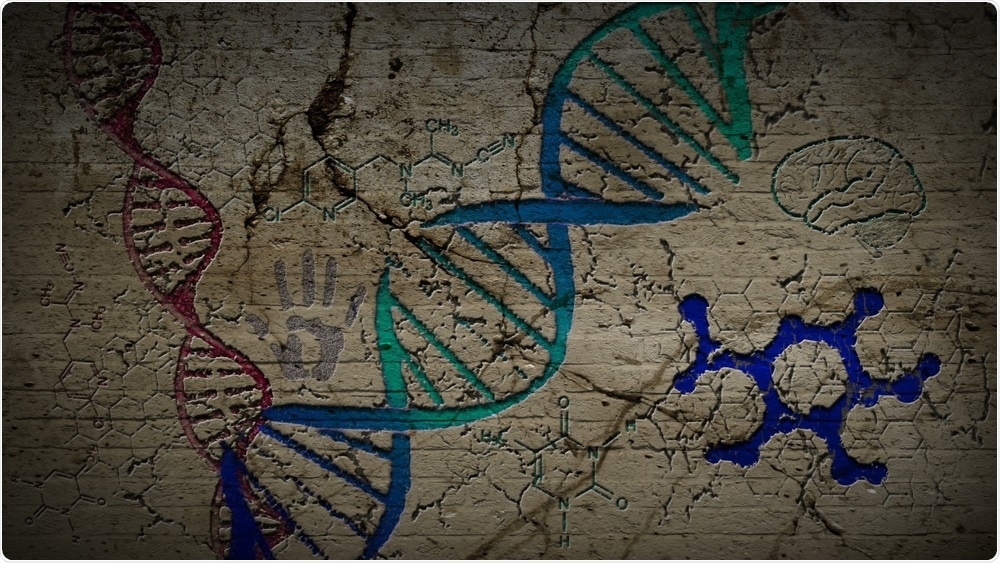The current year marks the 20th anniversary of human genome sequencing. To mark this event, scientists headed by Professor Qiaomei Fu from the Institute of Vertebrate Paleontology and Paleoanthropology (IVPP) of the Chinese Academy of Sciences reviewed the current progress in the area of ancient DNA (aDNA)—DNA acquired from the remains of past organisms.

Image Credit: SergioSH/Shutterstock.com
The review titled “Insights into human history from the first decade of ancient human genomics” was published on September 23rd, 2021, in the Science journal.
Ancient DNA research started with short DNA fragments and eventually progressed due to the wide application of high-throughput sequencing (HTS) techniques. In 2010, the publication of three draft ancient genomes (i.e., Neanderthal, Denisovan, and a 4000 year (kyr)-old modern human from Greenland) marked a new era for aDNA research.
The genomes of extinct archaic humans (i.e., Neanderthals and Denisovans) were reconstructed. The Denisovans were initially pinpointed by utilizing only aDNA data. These two archaic lineages separated from modern humans ∼550000 years ago (ka). They eventually separated from each other ∼400 ka.
aDNA examinations reveal that archaic and modern humans were not isolated from each other after the ∼550-ka separation. There were multiple waves of introgression within archaic humans (i.e., Neanderthals and Denisovans) and modern humans. Moreover, the two archaic lineages admixed between themselves, as revealed by a ∼50-kyr-old archaic person (Denisova 11) who had a Denisovan father and a Neanderthal mother.
Regarding early modern human populations, genetic data advocates an African origin. But it is hard to estimate a single model for evaluating the origin of African ancestry. At any rate, sometime between ∼250 and 200 ka, five key branches contributing to early modern human ancestry began to separate from each other within a short space of time in Africa.
Genomic data, in Eurasia, has been acquired from early modern humans dating to as early as ∼45 ka. These data show numerous early modern human lineages. A few of these lineages do not reveal any detectable genetic continuity with later populations, while others, including those symbolizing Ancient Europeans, Ancient North Siberians, and Ancient Asians, might be genetically linked with present-time human populations.
Eventually, rising population structure, heightened population interaction, and greater migration were witnessed throughout Eurasia.
During the Last Glacial Maximum or LGM, a harsh period between 27—19 ka, population changes are observed in Europe, East Asia, and Siberia. With a warmer and more stable climate after the LGM, the human population expanded, migrated, and interacted.”
Qiaomei Fu, Professor, Institute of Vertebrate Paleontology and Paleoanthropology, Chinese Academy of Sciences
Ancient DNA research efficiently widened the knowledge of human history. Yet, researchers have only plunged below the surface and additional efforts are needed.
This must incorporate additional sampling from genomes older than 30 kyr and from areas like Asia, Africa, and Oceania; the scope of aDNA research can be advanced by using other ancient molecular information like isotopic, proteomic, epigenetic, and microbiomic data along with examining adaptive variants.
aDNA research not only expands the understanding of human history but also enhances the insights into human biology. Examining humans’ adaptations to extreme environments like the infectious agents and LGM in the past would enable overcoming fresh challenges like climate change and more pandemics in the future.
Source:
Journal reference:
Liu, Y., et al. (2021) Insights into human history from the first decade of ancient human genomics. Science. doi.org/10.1126/science.abi8202.